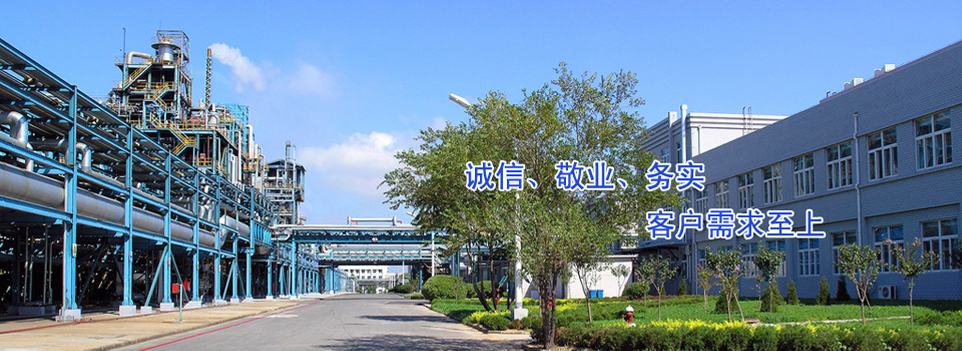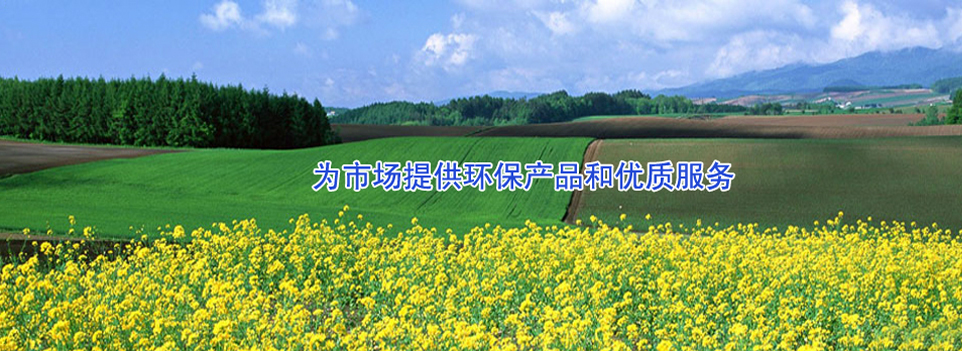High-efficiency and Low-toxicity Pesticide: A Promising Protagonist Depending on Promotion
In order to reduce the harm of highly toxic pesticides, in recent years, the state has prohibited or restricted the production and use of five types of high-toxicity and high-residue pesticides, for example, methamidophos and other highly toxic pesticides, which have been completely withdrawn from the market. At the same time, it encourages positively the research and development of efficient, low-toxicity and safe pesticides.
However, the promotion of efficient, low-toxicity and safe pesticides was not as smooth as it had been expected, as farmers needs time to learn about the new pesticides, and because the new pesticides are often not as strong and quickly effective as highly toxic pesticides, they require actively guidance and popularization. Now, it is the critical period for applying wheat pesticides during spring farming. How are pesticides applied around the country?
It is reported that recently the Ministry of Agriculture has conducted special supervision and spot checks on the quality and labeling of wheat pesticides on the pesticides markets of 18 major wheat production counties in 9 provinces including Jiangsu, Anhui, Sichuan, Hubei, Shandong, Shanxi, Shaanxi, Henan and Hebei, during which 226 samples were taken. So far, sample testing in four provinces, that is, Jiangsu, Anhui, Sichuan and Hubei, has been completed, and the samples in Shandong and other five provinces are undergoing testing.
The supervision and spot check results show that the spring farming pesticide market this year has three characteristics. First, the wheat pesticides on the market are adequate in supply. Viewed from the production companies and operation units, the varieties and a quantity of pesticides are adequate in supply, meeting the normal requirements of pesticides for protecting wheat. Secondly, product quality is basically guaranteed. The testing and inspection results completed in the four provinces show that the product quality pass rate is 90.1%, and the labeling pass rate is 89.1%, among which the wheat pesticides quality spot checks in Jiangsu reaches 100%. Thirdly, the pesticide market has become increasingly standardized. The pesticides product labels are evidently standardized after the full implementation of the six new regulations registered at and managed by the Ministry of Agriculture, receiving praises by the majority of farmers. In accordance with the general planning of “2009 Pesticide Market Supervision Year Activities” carried out by the Ministry of Agriculture, local agricultural sectors have effectively strengthened the management over pesticide operation units by signing letters of responsibilities of trustworthy operations with pesticide operation units. The results of spot checks show that most of the pesticide stores have established a “Two Accounts, Two Invoices and One Card” system (purchase-sales account, purchase-sales invoice, credit card). Simple wall charts for the restriction of pesticides and those for explaining how to make scientific selection among pesticides are posted at visible places.
The reporter learned from the Ministry of Agriculture that the situation of preventing and controlling wheat stripe rust and sclerotinia is now fairly grim; nevertheless, the pesticides for disease control around the country basically reach the standards. Through the joint efforts of the agricultural sector around the country, the total area of preventing and controlling wheat stripe rust and sclerotinia is respectively 2,556 mu and 4,447 mu. The stripe rust and sclerotinia in the southwest tend to be stabilized, and the prevention and control work has shown signs of results. Currently, the key area of the incidence of stripe rust has shifted to the northwestern of Hubei, and sclerotinia reaches peak period in the middle and lower stream of the Yangtze River. As of April 8, the incidence of stripe rust has spread to a total of 26.21 million mu, an increase of 9.22 million mu over the same period last year; the cumulative occurrence of sclerotinia has covered 3,617 mu, an increase of 202 mu over the same period last year. To this end, the relevant provinces are implementing various control measures.
For example, the Agriculture Department of the major agricultural province of Sichuan issued a “Proposal on promoting specialized crop pests control and prevention”, Shaanxi Province organized 40 to 60 dedicated teams at the major stripe rust incidence areas, to improve the crop pest prevention and control capacity of the province. In terms of regulating the usage of pesticides, Shaanxi Provincial Agriculture Department conducted a special inspection over the pesticides for wheat stripe rust prevention in the province on March 6 - 8, involving a total of 42 pesticide stores in 13 counties of 5 cities including Baoji, Xianyang, and so on, and having sampled 23 kinds of pesticides of wheat stripe rust samples containing triadimefon. The products involved 11 manufacturers in 7 provinces. The test results show that 22 samples have passed the quality inspection, with a pass rate of 95.6%; 22 label samples are acceptable, with a pass rate of 95.6%. Compared with last year, the pass rates of both quality and label have improved significantly. In the process of the above spot inspection, it is discovered that the alternatives to highly toxic pesticides encountered such problems as narrower insecticidal spectrum, slower quick effectiveness, higher prices and so on in the process of promotion. To improve the rate of market population is the key to the comprehensive market promotion.
To this end, the Ministry of Agriculture at all levels will make further efforts in promotion and training. First, inform farmers of the methods for differentiating and purchasing the pesticides of different usage by viewing the labels, so that they can select correct pesticides according to application range and the object of prevention; secondly, strengthen the predicating and forecasting of pests and diseases, guide farmers to choose appropriate equipment, control the suitable time for applying pesticides, and ensure safe and rational use of pesticides; Thirdly, popularize the knowledge on protecting their own legal rights among farmers, and consciously preserve and collect evidences, so that they can protect their own interests where any problems concerning pesticide quality occur.
However, the promotion of efficient, low-toxicity and safe pesticides was not as smooth as it had been expected, as farmers needs time to learn about the new pesticides, and because the new pesticides are often not as strong and quickly effective as highly toxic pesticides, they require actively guidance and popularization. Now, it is the critical period for applying wheat pesticides during spring farming. How are pesticides applied around the country?
It is reported that recently the Ministry of Agriculture has conducted special supervision and spot checks on the quality and labeling of wheat pesticides on the pesticides markets of 18 major wheat production counties in 9 provinces including Jiangsu, Anhui, Sichuan, Hubei, Shandong, Shanxi, Shaanxi, Henan and Hebei, during which 226 samples were taken. So far, sample testing in four provinces, that is, Jiangsu, Anhui, Sichuan and Hubei, has been completed, and the samples in Shandong and other five provinces are undergoing testing.
The supervision and spot check results show that the spring farming pesticide market this year has three characteristics. First, the wheat pesticides on the market are adequate in supply. Viewed from the production companies and operation units, the varieties and a quantity of pesticides are adequate in supply, meeting the normal requirements of pesticides for protecting wheat. Secondly, product quality is basically guaranteed. The testing and inspection results completed in the four provinces show that the product quality pass rate is 90.1%, and the labeling pass rate is 89.1%, among which the wheat pesticides quality spot checks in Jiangsu reaches 100%. Thirdly, the pesticide market has become increasingly standardized. The pesticides product labels are evidently standardized after the full implementation of the six new regulations registered at and managed by the Ministry of Agriculture, receiving praises by the majority of farmers. In accordance with the general planning of “2009 Pesticide Market Supervision Year Activities” carried out by the Ministry of Agriculture, local agricultural sectors have effectively strengthened the management over pesticide operation units by signing letters of responsibilities of trustworthy operations with pesticide operation units. The results of spot checks show that most of the pesticide stores have established a “Two Accounts, Two Invoices and One Card” system (purchase-sales account, purchase-sales invoice, credit card). Simple wall charts for the restriction of pesticides and those for explaining how to make scientific selection among pesticides are posted at visible places.
The reporter learned from the Ministry of Agriculture that the situation of preventing and controlling wheat stripe rust and sclerotinia is now fairly grim; nevertheless, the pesticides for disease control around the country basically reach the standards. Through the joint efforts of the agricultural sector around the country, the total area of preventing and controlling wheat stripe rust and sclerotinia is respectively 2,556 mu and 4,447 mu. The stripe rust and sclerotinia in the southwest tend to be stabilized, and the prevention and control work has shown signs of results. Currently, the key area of the incidence of stripe rust has shifted to the northwestern of Hubei, and sclerotinia reaches peak period in the middle and lower stream of the Yangtze River. As of April 8, the incidence of stripe rust has spread to a total of 26.21 million mu, an increase of 9.22 million mu over the same period last year; the cumulative occurrence of sclerotinia has covered 3,617 mu, an increase of 202 mu over the same period last year. To this end, the relevant provinces are implementing various control measures.
For example, the Agriculture Department of the major agricultural province of Sichuan issued a “Proposal on promoting specialized crop pests control and prevention”, Shaanxi Province organized 40 to 60 dedicated teams at the major stripe rust incidence areas, to improve the crop pest prevention and control capacity of the province. In terms of regulating the usage of pesticides, Shaanxi Provincial Agriculture Department conducted a special inspection over the pesticides for wheat stripe rust prevention in the province on March 6 - 8, involving a total of 42 pesticide stores in 13 counties of 5 cities including Baoji, Xianyang, and so on, and having sampled 23 kinds of pesticides of wheat stripe rust samples containing triadimefon. The products involved 11 manufacturers in 7 provinces. The test results show that 22 samples have passed the quality inspection, with a pass rate of 95.6%; 22 label samples are acceptable, with a pass rate of 95.6%. Compared with last year, the pass rates of both quality and label have improved significantly. In the process of the above spot inspection, it is discovered that the alternatives to highly toxic pesticides encountered such problems as narrower insecticidal spectrum, slower quick effectiveness, higher prices and so on in the process of promotion. To improve the rate of market population is the key to the comprehensive market promotion.
To this end, the Ministry of Agriculture at all levels will make further efforts in promotion and training. First, inform farmers of the methods for differentiating and purchasing the pesticides of different usage by viewing the labels, so that they can select correct pesticides according to application range and the object of prevention; secondly, strengthen the predicating and forecasting of pests and diseases, guide farmers to choose appropriate equipment, control the suitable time for applying pesticides, and ensure safe and rational use of pesticides; Thirdly, popularize the knowledge on protecting their own legal rights among farmers, and consciously preserve and collect evidences, so that they can protect their own interests where any problems concerning pesticide quality occur.




